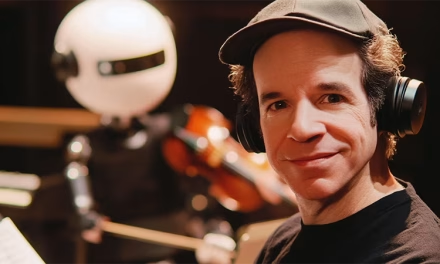Last week, a Russian module accidentally pushed the International Space Station out of alignment. Now, a NASA flight director has revealed that the event was more serious than NASA initially reported.

On Thursday (July 29) morning, Russia’s long-awaited research module Nauka docked with the space station. But a few hours later, the module accidentally fired its thrusters, briefly tilting the space station and causing it to lose what engineers call “attitude control.”
However, while NASA said on Twitter and officials repeated during public comments about the incident that the orbiting lab tilted “about 45 degrees”, that appears not to have been the full story. According to reporting by The New York Times, Zebulon Scoville, the NASA flight director leading mission control in Houston during the event, says the station tilted far more severely than just 45 degrees. It spun upside down.

According to Scoville, the event has “been a little incorrectly reported.” He said that after Nauka incorrectly fired up, the station “spun one-and-a-half revolutions — about 540 degrees — before coming to a stop upside down. The space station then did a 180-degree forward flip to get back to its original orientation,” according to the report.
Scoville also shared that this was the first time that he has ever declared a “spacecraft emergency.”
Nauka’s errant firings were likely the result of human error. This led NASA Mission Control in Houston to initiate “loss of attitude control” procedures on board the station, a contingency astronauts and flight controllers train for. Then, along with flight controllers in Moscow, the teams commanded the station to fire its thrusters on the Russian segment of the space station, as well as a Progress supply vehicle attached to the laboratory. These combined actions prevented the station from tumbling too violently.
Following this near miss, NASA hastily called a news conference and brought out key figures before the media, however, they deferred many questions on the technical issues to Roscosmos, which has offered mixed messages. A senior official in Roscosmos, former cosmonaut Vladimir Solovyov, said in a statement “Due to a short-term software failure, a direct command was mistakenly implemented to turn on the module’s engines for withdrawal.
This makes the problem sound like a software error. But later, the head of Roscosmos, Dmitry Rogozin, acknowledged that someone on the ground could have made a mistake. “Everything was going well, but there was a human factor,” he told a Russian publication, as reported by Reuters.
Given the likelihood that Nauka’s accidental thruster firing involved human error, that would be the third major problem in less than three years. In October 2018, the launch of Russian cosmonaut Aleksey Ovchinin and NASA astronaut Nick Hague was aborted after a Soyuz booster failure, and the crew had to make an emergency return to Earth. A subsequent investigation found the side-mounted booster had been improperly mated to the core stage of the Soyuz rocket. Around the same time, Russia announced that there was a small hole in a different Soyuz vehicle, already attached to the International Space Station.
NASA may need to decide if it is willing to rely on a partner that is clearly having technical issues. However, Scoville told the New York Times that he is assured in the partnership that Russia and the U.S. have on board the station.
“I have complete confidence in the Russians,” he said. “They are a fantastic partnership with NASA and the entire International Space Station program.”
NASA’s stated intent is to maintain a presence in low Earth orbit. By 2028 or shortly after, it hopes to have commercial space stations operating there. But until that time, the International Space Station is NASA’s only game in town. Should the Russians become even less reliable, the US space agency has options, but those will take time to implement.
Nauka’s accidental thruster firing came one day ahead of the planned launch date for Boeing’s uncrewed test flight for its Starliner astronaut taxi, which the company built with support from NASA’s Commercial Crew Program. That launch is postponed due to the incident.
Cosmonauts gave a brief video tour of the module:
-30-
![]()
David Raiklen wrote, directed and scored his first film at age 9. He began studying keyboard and composing at age 5. He attended, then taught at UCLA, USC and CalArts. Among his teachers are John Williams and Mel Powel.
He has worked for Fox, Disney and Sprint. David has received numerous awards for his work, including the 2004 American Music Center Award. Dr. Raiklen has composed music and sound design for theater (Death and the Maiden), dance (Russian Ballet), television (Sing Me a Story), cell phone (Spacey Movie), museums (Museum of Tolerance), concert (Violin Sonata ), and film (Appalachian Trail).
His compositions have been performed at the Hollywood Bowl and the first Disney Hall. David Raiken is also host of a successful radio program, Classical Fan Club.













You must be logged in to post a comment.